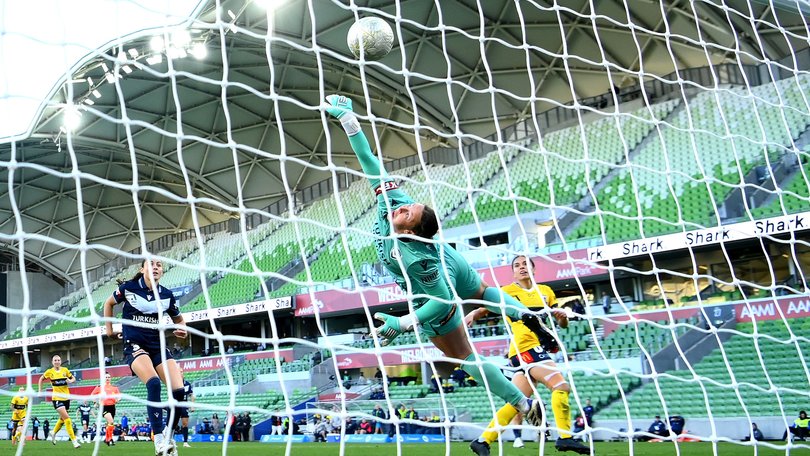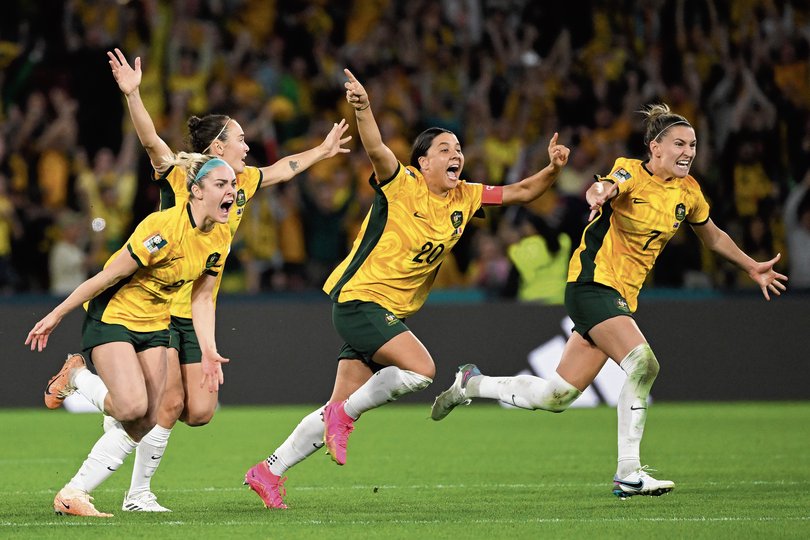GEORGIE PARKER: Women’s grand final proves Australia is wasting the legacy of Matildas’ World Cup heroics

After the Matildas’ stunning run at the 2023 FIFA Women’s World Cup, there was a rare and powerful momentum behind women’s soccer in Australia.
Stadiums were packed, screens were filled with green and gold, and across the country we saw these women become sporting heroes.
For the first time, it felt like the conversation around women’s sport had genuinely shifted.
Sign up to The Nightly's newsletters.
Get the first look at the digital newspaper, curated daily stories and breaking headlines delivered to your inbox.
By continuing you agree to our Terms and Privacy Policy.And it did for the Matildas. But the domestic league is a different story.
The A-League Women’s grand final was played last Sunday at Melbourne’s AAMI Park. You could be forgiven for not knowing it happened at all. There was no mainstream media buzz, no widespread promotion, and only 6568 people were in the stands to see Central Coast defeat Melbourne Victory in a penalty shootout.
The 2023 Women’s World Cup has become a missed opportunity.
The Matildas are the most beloved and influential sporting team in the country. They sell out stadiums in every city they play in. They’ve become more than a soccer team — they are social change makers, leading conversations around gender equality, representation, and opportunity in sport. And Australians have shown up for them in record numbers.
Yet that energy hasn’t transferred to the local league.
I’m part of the problem. I jumped on the Matildas bandwagon like the rest of the country. I cried when Cortnee Vine scored that unforgettable penalty in the quarterfinal victory over France. The emotions I felt sitting in my seat at the World Cup semifinal in Sydney were unrivalled - electric, unforgettable - and I’ll never forget the deafening sound when Sam Kerr scored against England, which was the loudest sound I’ve ever heard at a stadium.
But it didn’t carry on to the domestic league.
Why? Is it me, or is it the league and the lack of visibility that drowns in the wake of the AFL and NRL giants? How do we change this?
Part of it comes down to timing. The grand final is always going to play second fiddle to the AFL in Melbourne. Soccer will always have to fight for space in Australia’s crowded sports landscape.
The grand final was played at the same time as an AFL match at the nearby MCG - which attracted a crowd of more than 50,000 people - and a Super Netball game across the road at John Cain Arena which drew 8500 fans.
Then there’s the issue of visibility. The league simply hasn’t maintained a consistent presence in the media or public eye.
After all the post-World Cup talk of legacy, we’ve seen very little follow through.

Where was the marketing push? The player profiles? The behind-the-scenes stories that connect fans to the athletes and the clubs? And not just the players we already know, who are mostly overseas now.
The Matildas didn’t become household names overnight. They became visible through smart, sustained storytelling. The domestic game deserves the same effort.
Compare that with what’s happening in the UK.
The Arsenal Women side average move 33,000 fans at home games — an astonishing figure driven by smart leadership and clear commercial strategy. Under chief commercial officer Juliet Slot, the club has implemented targeted marketing campaigns and invested in growing the women’s side as a product in its own right.
She has lifted her club to become industry leaders and has shown what’s possible when a club sees value in its women’s team and acts on it.
And, of course, there’s the money.

While international leagues invest heavily in women’s football, Australian players are still often forced to head overseas to earn a liveable wage.
Some of our most recognisable Matildas — heroes to a generation — are barely seen in the A-League because the pay is uncompetitive. We’re developing talent only to watch it flourish elsewhere, and without star power week-to-week it’s harder to build momentum, media interest and loyal fan bases at home.
This of course happens to the men in Australia, with no one being able to compete with the money overseas, but it’s even more stark in the women due to the fact most A-League Women’s players have to work a job to pay the bills.
We can’t expect the Matildas to carry the women’s game on their shoulders every four years. Sustainable change happens in between the major tournaments — on cold Saturday nights, in local stadiums, with regular coverage and visible support.
The success of the Matildas wasn’t a fluke. It was the result of decades of work, resilience, and passion. But if the domestic league doesn’t step up, that legacy risks becoming a footnote rather than a foundation.
The question isn’t whether people care about women’s football. We’ve already seen that they do.
The question is whether those in charge care enough to build on that spark — or if they’re content to let it burn out, unnoticed, like last weekend’s grand final.
